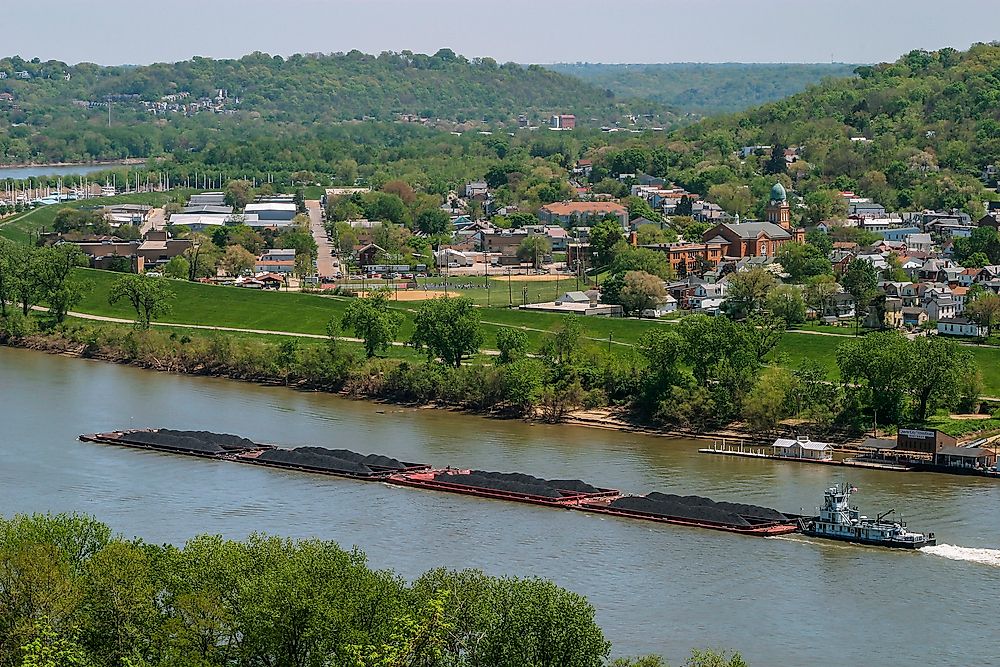Where is the Mason Dixon Line?

The Mason-Dixon Line is a significant cultural designation in the US. The line was surveyed by Charles Mason in collaboration with Jeremiah Dixon from 1763 to 1767 to solve a border dispute between Delaware, Maryland, and Pennsylvania when America was a colony. The line remains a demarcation line, and it forms a portion of the borders of West Virginia, Pennsylvania, Delaware, and Maryland.
Geography of the Mason-Dixon Line
The actual survey line starts at Philadelphia's south in Pennsylvania and stretched from a benchmark east to the River Delaware and west to what was included then as the boundary with West Virginia. Mason and Dixon fixed the boundary between the States of Pennsylvania and Delaware and the estimated north-south part of the boundary between Maryland and Delaware. Much of the Delaware-Pennsylvania boundary is in the form of an arc while the Delaware-Maryland border since it was drawn to bisect the Delmarva Peninsula and not follow the course of a meridian, does not run north to south. The Maryland-Pennsylvania boundary is drawn as an east-west line, and its estimated mean latitude is 39°43'20''. Mason and Dixon further extended the boundary mark 40 miles west of the western boundary of Maryland into a region that was still in dispute between the two States although this went against their original charter. The survey was completed on October 9, 1767, roughly 31 miles east of Pennsylvania's current southwest corner.
History of the Mason-Dixon Line
The survey was necessitated by the disputes between Delaware, Maryland, and Pennsylvania which were then British colonies. Some of these disputes were serious such that Maryland's claim would include Pennsylvania's largest city of Philadelphia in its territory. The disputants enlisted the services of a surveyor named Jeremiah Dixon and an astronomer called Charles Mason. The Penns of Pennsylvania and the Calverts of Maryland parted with 9 shillings 0 pence to have 244 miles surveyed with accuracy. The line features four segments as stipulated by the terms of the settlement and they are the arc line, the tangent line, the north line, and the 39°43' N parallel. The two experts began surveying the Maryland-Pennsylvania line in April 1765 and quit on October 11, 1767, after their Iroquois guides refused to proceed further than 244 miles west of the Delaware since the team had reached the border between the Iroquois and the Lenape. The Mason-Dixon was resurveyed in 1849 and again in 1900 and the 1960s.
Symbolism of the Mason-Dixon Line
The Mason-Dixon is popularly used as a cultural boundary to separate the North and the South (Dixie). When Pennsylvania ended slavery, the boundary became a demarcation mark for the legality of slavery. However, the demarcation did not stretch beyond Pennsylvania since Delaware was still a slave state and it extended east and north of the boundary. New Jersey also lay east and north of the boundary, and although slavery was scrapped in 1846, slaves were still "apprenticed" to their masters until 1865.
Naming the Mason-Dixon Line
Mason and Dixon most likely did not hear of the term "Mason-Dixon line." The official report on the survey work was released in 1768, and it did not feature their names. The term was sometimes used in the decades after the survey, but it was not until the Missouri Compromise included the "Mason and Dixon line" in the boundary between the free and slave territory that it came into popular use.











